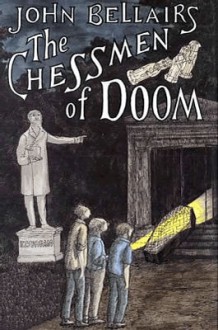
I thank Rosie Croft from Pen & Sword for providing me an early paperback copy of this book, which I freely chose to review.
I worked in Sheffield and lived in the area for almost 10 years and had visited it on occasions as well before that, and although it was long after the 1980s (I arrived in the UK in the early 90s), I was familiar with Martin Jenkinson’s work, had seen some of his iconic photographs of the period, and could not resist the opportunity to sample some more. This was a particularly interesting and intense period in the history of the city, with the closures of many steel and cutlery manufacturing companies, the pit closures in the region, and with many strikes and much social unrest, that Jenkinson recorded in his work. It is impossible to look at his pictures and not wonder about recent events.
This book combines a great selection of images from the period with some background text, that rather than providing lengthy explanations about each image, is organised as an introductory write-up for each one of the sections. Although there isn’t much writing, the brief summaries offer a good overview to people who might not be familiar with the historic-social circumstances of the era and provide a solid context for the fantastic images.
The book is clearly a labour of love from Jenkinson’s daughter, and it includes a foreword by Helen Hague, a reporter who has worked at a number of local and national newspapers and was a personal friend of the photographer, a Tribute, written by Chris Searle, summarising Jenkinson’s career, and a number of sections that help organise the photographic content: Who We Are Exhibition (that was an exhibition at Sheffield’s Weston Park Museum of Jenkinson’s work, which run from November 2018 to April 2019), Steel (that includes images of strikes, a section on cutlery and silver, one on retail and the public section [including images of women taking up various jobs that were still an uncommon sight at the time], one on rail freight), Local Government (National and Local Government Officer’s Association [look out for David Blankett], SYCC and fare cuts [about increases to the public transport fares, hotly contested], the Manpower Services Commission [a new programme to fight unemployment, also hotly contested], Campaigns and Protests (People’s March for Jobs, Cutler’s Feast [where Margaret Thatcher was not particularly welcomed, but she went nonetheless], The Miner’s Strike [this is one of my favourite sections and many of Jenkinson’s iconic photographs are featured here], Eversure [a wonderful picture of a wedding couple visiting a picket at the factory where they both work], the National Abortion Campaign, Sheffield Campaign for Access to Moorland, Sheffield Campaign Against Racism and Anti-Apartheid, Anti-Nuclear Protests, Sheffield Street Band), Sheffield & Its People (another great section including some pictures of Hillsborough Football Stadium that are impossible to look at without thinking about the later tragedy), a section referring to The Martin Jenkinson Image Library, and a final section of Acknowledgements.
This is not a nostalgic book about the Sheffield of the 1980s, although there are pictures of some very recognisable landmarks, but rather a book about certain aspects of the period and its people, and they show the concerns and interests of a man who had worked in the steel industry and suffered in his own flesh the changes brought by its demise. It’s not a book of pretty pictures, although there are some beautiful images, but that is not the aim. They are pictures that tell a story, and not always a nice one. As Helen Hague says in the foreword: ‘Martin Jenkinson had a gift for capturing the moment.’
The book is packed with black and white pictures chronicling a city and its people in an era of major political, social, and economic changes, and anybody interested in the 1980s in the UK will find plenty to enjoy and to make them think in this book. I know many writers find inspiration in images, and here they will have a field day. In case you want to get an idea of what type of images you might find in the book, you can check the Martin Jenkinson Image Library(here).
A fabulous book for lovers of photography with a social conscience, and for anybody interested in the recent history of Sheffield and of the UK in general.


 Log in with Facebook
Log in with Facebook 









